Commit2Act – App to Combat Climate Change
Today, more than ever, young people are looking for ways to combat climate change and protect their future. However, with so much information available, it can be hard to know what the most impactful actions are. Additionally, some actions might not be feasible such as purchasing an electric vehicle or, depending on where you live, participating in a beach clean-up. Even when environmentally-sustainable actions are implemented, they can seem so inconsequential that it can be hard to see how they contribute to meaningful change.
To create a system to help youth track and visualize the impact of their environmentally-friendly actions, the UBC Cloud Innovation Center and TakingITGlobal developed the Commit2Act solution. Commit2Act is a web and mobile app that enables youth to make climate-friendly decisions in everyday life. It guides youth towards climate-friendly lifestyle choices, measures the impact of these choices, and connects users to a community of like minded youth.
Approach
The solution is a prototype web and mobile app for youth to log and track daily climate-friendly actions as individual users or in groups. As a proof-of-concept, the solution will utilize three user behaviors to demonstrate functionality: (i) eat sustainably, (ii) reduce plastic water bottles, and (iii) use active transportation. What makes this app stand apart from other apps that encourage environmental sustainability is that it will show the user the amount of CO2 gas they have saved by choosing the environmentally-friendly option. This feature allows for a visualization of how the user’s actions are directly combating climate change.
Our solution is an app that benefits three user personas: (i) students ages 12-18, (ii) educators, and (iii) administrators.
Students are able to self-report environmentally-friendly actions and see where their ranking stands against others on the group leaderboard. In order for students to submit an action, they will be encouraged to attach a photo related to the action they are logging in the app to gain the most points. For example, if a user is trying to log that they ate a plant-based meal in the app, they will be prompted to submit a photo of their food in order to verify the action. With this in mind, UBC CIC utilized Amazon Rekognition in the prototype, a service which analyzes and recognizes objects, actions, and people in images.
Educators are able to create groups for their students, allowing their students to compete against one another and other classes on a leaderboard which promotes engagement with the application.
Administrators have access to a dashboard where they are able to edit existing actions, pause or delete or add new actions. Editing actions is helpful if administrators need to adjust actions to be more relevant to their groups, or if they need to update the wording of an action. They also can view analytics for both individual users and groups, showing administrators how a certain user or group is doing. Additionally, administrators can view analytics in different cities or provinces, allowing them to see a certain region’s progress, or to compare how different area’s progress compares to another.
TakingITGlobal plays a part in working towards the UN Sustainable Development Goal for Climate Action, which was a major motivation behind creating the application. The data from the app can be extracted by TakingITGlobal, to report program impact on the UN Sustainable Development Goal for Climate Action. Commit2Act is part of the Waves of Change program, funded by Environment and Climate Change Canada through the Environmental Damages Fund.
Supporting Artifacts
Architecture Diagram
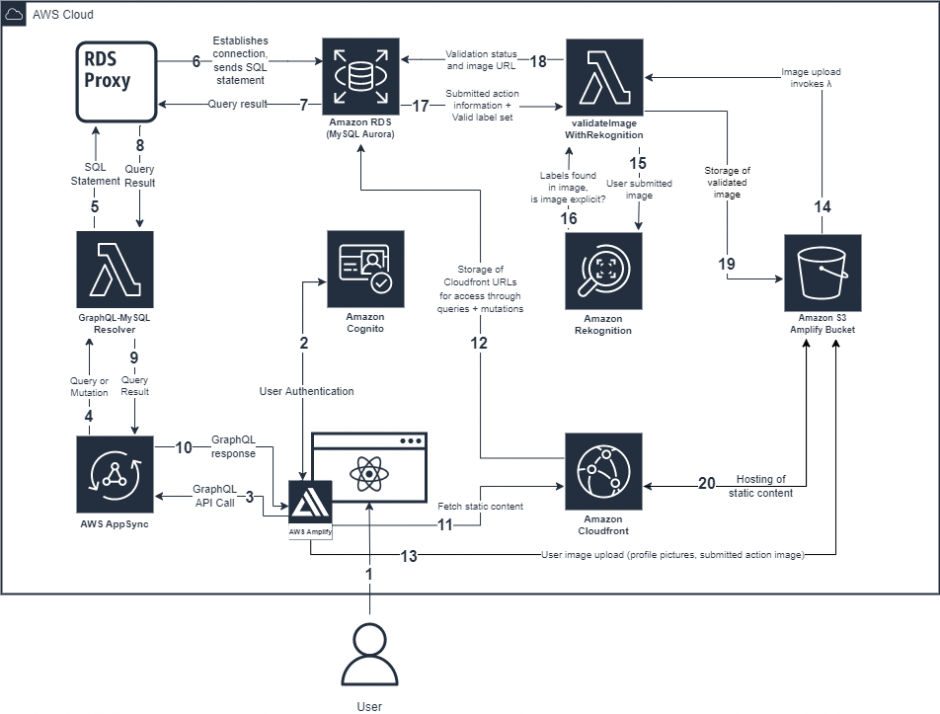
User Interface
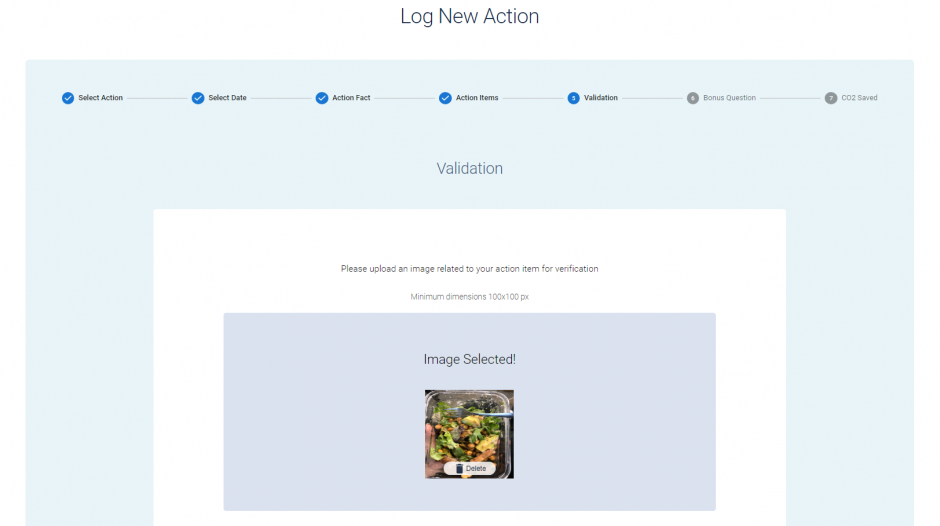
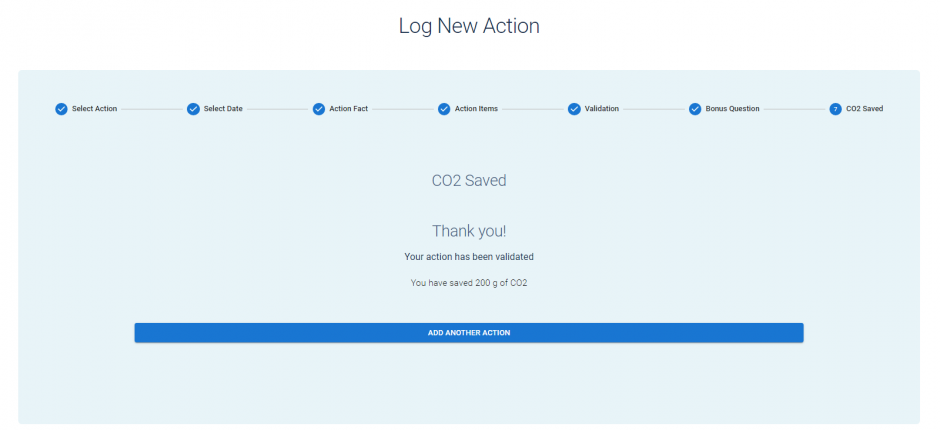
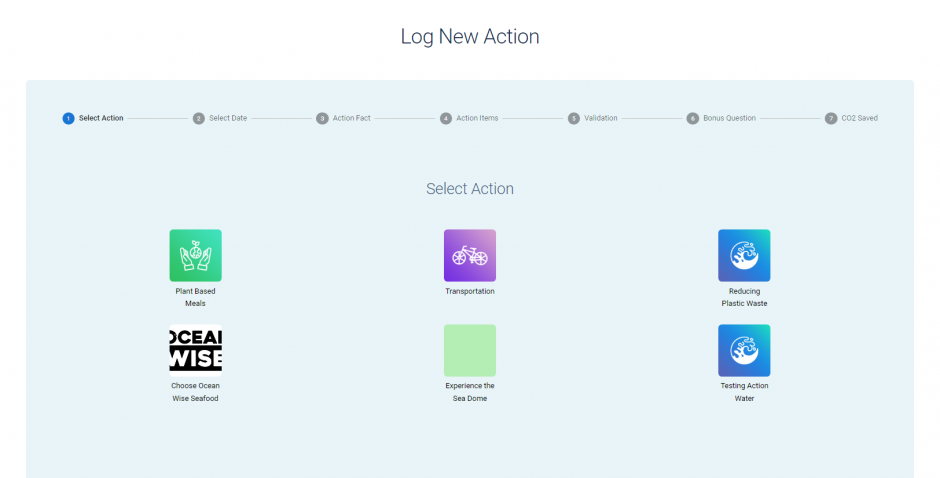
User Interface: Home Page
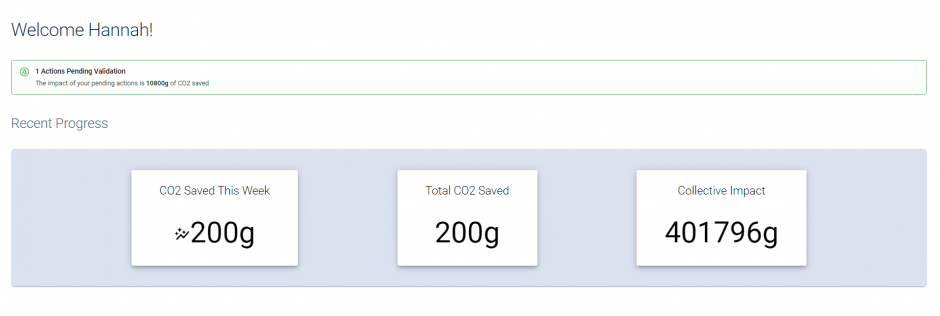
Demo Video
Technical Details
Commit2Act administrators and users can connect to the webpage using any device capable of displaying a modern browser. Once connected, users are then authenticated by AWS Cognito and API requests are routed through AWS AppSync. The website is supported by the GraphQL API hosted by AppSync. For every operation involving the fetching or modification of data, we invoke a query or mutation, and display the result.
To handle user action submission, this solution utilizes AWS Rekognition, an API service for image and video analysis that uses machine learning to scan user submitted images for explicit content filtering. This was implemented to ensure that user submitted actions are truthful and appropriate.
When an action type is created by a site admin, they are asked to input relevant labels for each action. A user submitted image must contain the relevant labels for that action to pass validation. For example, if the action is “Active Transportation”, a set of expected valid labels may be [“Bus”, “Train”, “Bike”, “Shoes”, “Bicycle”]. When an image associated with a submitted action is uploaded by a user, it is sent to an S3 Bucket (an AWS service for storing data) located in the defined region for the project. A lambda function (code that is triggered to run in response to certain events) is then invoked, which calls Rekognition’s detect_labels and is_image_explicit API calls on the uploaded image. These API calls return all labels found with their associated confidence values, and a status on the explicit content in the image back to the Lambda function. The Lambda function will perform a quick comparison on the labels found in the image, and if any one of the expected labels is found within the image by Rekognition with a confidence rating over 70% (and if there is no explicit content found in the image) the image will be validated. If the expected labels were not found, then the image has to go through manual validation by a site admin or a group owner. If explicit content is found, the image is deleted and the action is invalidated.
The image’s validation status and Cloudfront hosted URL of the image is stored alongside the submitted action information in the RDS instance (MySQL Aurora DB). Cloudfront is an AWS content delivery network that facilitates the efficient display of static content, which ensures that image hosting on the application runs reliably.
Link to solution on GitHub: https://github.com/UBC-CIC/commit2act
Visuals



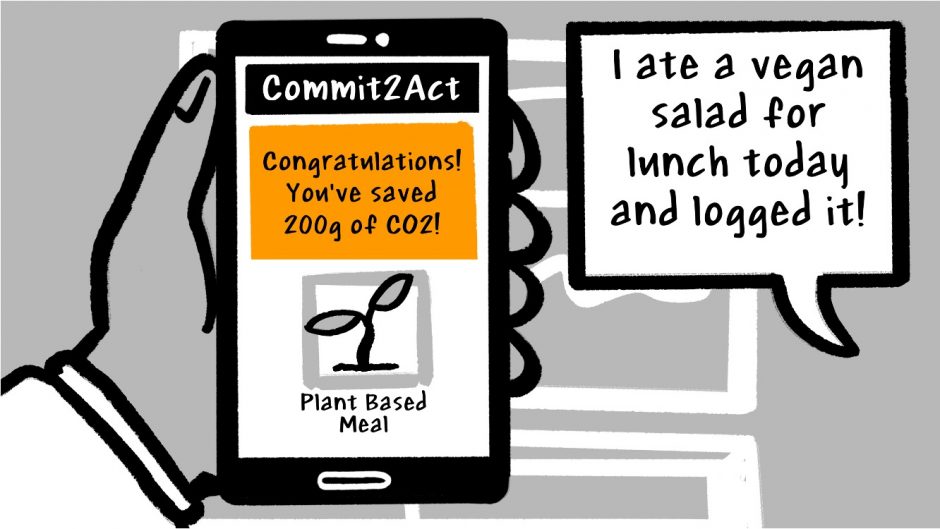

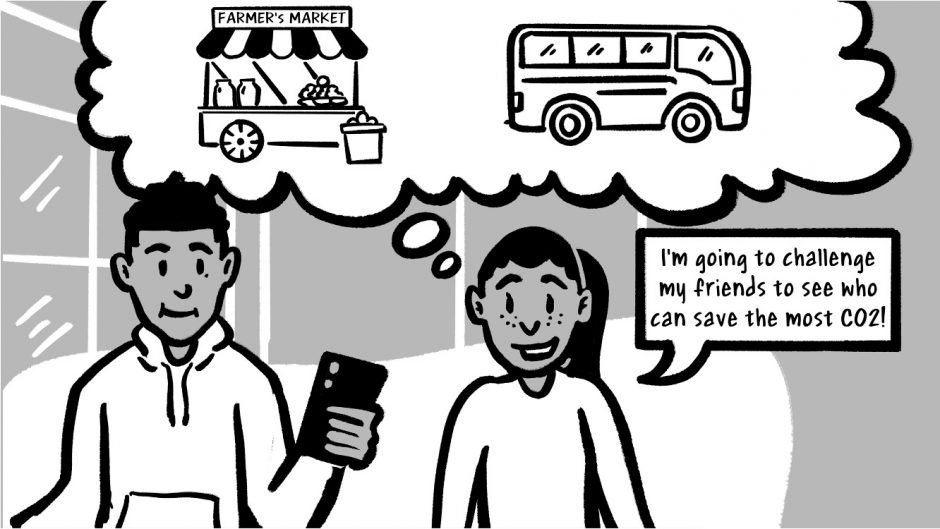
Acknowledgements
About the University of British Columbia Cloud Innovation Center (UBC CIC)
UBC’s CIC is a public-private collaboration between UBC and Amazon. A CIC identifies digital transformation challenges, the problems or opportunities that matter to the community, and provides subject matter expertise and CIC leadership.
Using Amazon’s innovation methodology, dedicated UBC and Amazon CIC staff will work with students, staff and faculty, and community, government or not-for-profit organizations to define challenges, engage with subject matter experts, identify a solution, and build a Proof of Concept (PoC). Through co-op and work-integrated learning, students also have an opportunity to learn new skills that they will later be able to apply in the workforce.
UBC’s CIC focuses on Community Health and Well-being.
- TakingITGlobal : A non-governmental organization that focuses on how to engage youth with taking action on global issues.
- Amazon Web Services Mentor Volunteer: Michael Dowling
- UBC Oceanography PhD Student: Jessica Schaub
- Waves of Change program, funded by Environment and Climate Change Canada through the Environmental Damages Fund
Photo by Noah Buscher on Unsplash
About the University of British Columbia Cloud Innovation Centre (UBC CIC)
The UBC CIC is a public-private collaboration between UBC and Amazon Web Services (AWS). A CIC identifies digital transformation challenges, the problems or opportunities that matter to the community, and provides subject matter expertise and CIC leadership.
Using Amazon’s innovation methodology, dedicated UBC and AWS CIC staff work with students, staff and faculty, as well as community, government or not-for-profit organizations to define challenges, to engage with subject matter experts, to identify a solution, and to build a Proof of Concept (PoC). Through co-op and work-integrated learning, students also have an opportunity to learn new skills which they will later be able to apply in the workforce.

